#black codes
Text

In 1865, enslaved people in Texas were notified by Union Civil War soldiers about the abolition of slavery. This was 2.5 years after the final Emancipation Proclamation which freed all enslaved Black Americans.
But Slavery Continued… In 1866, a year after the amendment was ratified, Alabama, Texas, Louisiana, Arkansas, Georgia, Mississippi, Florida, Tennessee, and South Carolina began to lease out convicts for labor.
This made the business of arresting black people very lucrative, thus hundreds of white men were hired by these states as police officers.
Their primary responsibility being to search out and arrest black peoples who were in violation of ‘Black Codes’
Basically, black codes were a series of laws criminalizing legal activity for black people. Through the enforcement of these laws, they could be imprisoned.
Once arrested, these men, women & children would be leased to plantations or they would be leased to work at coal mines, or railroad companies. The owners of these businesses would pay the state for every prisoner who worked for them; prison labor.
It’s believed that after the passing of the 13th Amendment, more than 800,000 Black people were part of that system of re-enslavement through the prison system.
The 13th Amendment declared that "Neither slavery nor involuntary servitude, except as a punishment for crime whereof the party shall have been duly convicted, shall exist within the United States, or any place subject to their jurisdiction."
Lawmakers used this phrase to make petty offenses crimes. When Blacks were found guilty of committing these crimes, they were imprisoned and then leased out to the same businesses that lost slaves after the passing of the 13th Amendment.
The majority of White Southern farmers and business owners hated the 13th Amendment because it took away slave labor. As a way to appease them, the federal government turned a blind eye when southern states used this clause in the 13th Amendment to establish the Black Codes.
#slavery#emancipation proclamation#black americans#convict leasing#black codes#13th amendment#involuntary servitude#prison labor#re-enslavement#southern states#racial discrimination
542 notes
·
View notes
Text
The Shocking Truth About Black Codes: How They Reinvented Slavery
youtube
20 notes
·
View notes
Text
Schools do a poor job of teaching about America’s legacy of white supremacy, according to a scholar who researches racial discrimination.
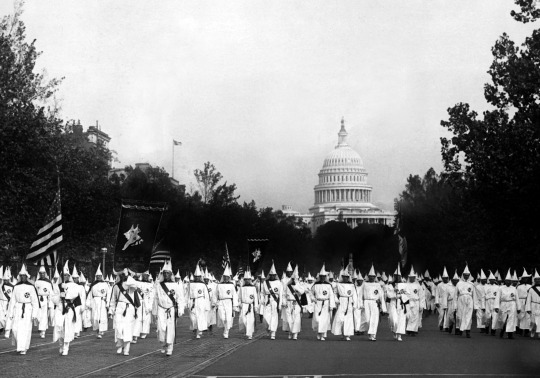
A Ku Klux Klan parade in Washington, D.C., in 1926
When it comes to how deeply embedded racism is in American society, blacks and whites have sharply different views.
For instance, 70 percent of whites believe that individual discrimination is a bigger problem than discrimination built into the nation’s laws and institutions. Only 48 percent of blacks believe that is true.
Many blacks and whites also fail to see eye to eye regarding the use of blackface, which dominated the news cycle during the early part of 2019 due to a series of scandals that involve the highest elected leaders in Virginia, where I teach.
The donning of blackface happens throughout the country, particularly on college campuses. Recent polls indicate that 42 percent of white American adults either think blackface is acceptable or are uncertain as to whether it is.
One of the most recent blackface scandals has involved Virginia Gov. Ralph Northam, whose yearbook page from medical school features someone in blackface standing alongside another person dressed in a Ku Klux Klan robe. Northam has denied being either person. The more Northam has tried to defend his past actions, the clearer it has become to me how little he appears to know about fundamental aspects of American history, such as slavery. For instance, Northam referred to Virginia’s earliest slaves as “indentured servants”. His ignorance has led to greater scrutiny of how he managed to ascend to the highest leadership position in a racially diverse state with such a profound history of racism and white supremacy.
Ignorance is Pervasive
The reality is Gov. Northam is not alone. Most Americans are largely uninformed of our nation’s history of white supremacy and racial terror.
As a scholar who researches racial discrimination, I believe much of this ignorance is due to negligence in our education system. For example, a recent study found that only 8 percent of high school seniors knew that slavery was the central cause of the Civil War. There are ample opportunities to include much more about white supremacy, racial discrimination and racial violence into school curricula. Here are three things that I believe should be incorporated into all social studies curricula today:
1. The Civil War was fought over slavery and one of its offshoots – the convict-lease system – did not end until the 1940s.
The Civil War was fought over the South’s desire to maintain the institution of slavery in order to continue to profit from it. It is not possible to separate the Confederacy from a pro-slavery agenda and curriculums across the nation must be clear about this fact.
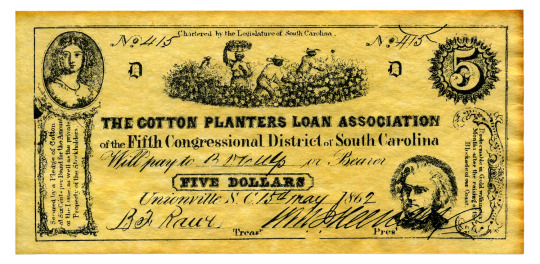
A Confederate treasury note from the Civil War Era shows how reliant the South’s economy was on slave labor. Photo from Scott Rothstein / www.shutterstock.com.
After the end of the Civil War, southern whites sought to keep slavery through other means. Following a brief post-Civil War period known as Reconstruction, white southerners created new laws that gave them legal authority to arrest blacks over the most minor offenses, such as not being able to prove they had a job.
While imprisoned under these laws, blacks were then leased to corporations and farms where they were forced to work without pay under extremely harsh conditions. This “convict leasing” was, as many have argued, slavery by another name and it persisted until the 1940s.
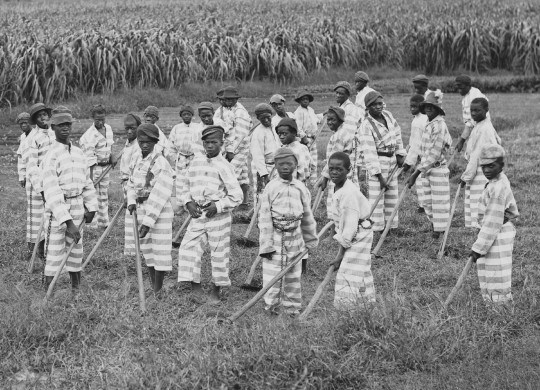
Southern jails made money leasing convicts for forced labor in the Jim Crow South. Circa 1903. Photo from Everett Historical / www.shutterstock.com.
2. The Jim Crow era was violent.
While students may be taught about segregation and laws preventing blacks from voting, they often are not taught about the extreme violence whites enacted upon blacks throughout the Jim Crow era, which took place from 1877 through the 1950s. Mob violence and lynchings were frequent occurrences – and not just in the South – throughout the Jim Crow era.
Racial terror was used as a means for whites to maintain power and prevent blacks from gaining equality. Notably, many whites – not just white supremacist groups like the Klu Klux Klan – engaged in this violence. Moreover, the torture and murder of blacks was not associated with any consequences.
During this same time, white society created negative stereotypes about blacks as a way to dehumanize blacks and justify the violence whites enacted upon them. These negative stereotypes included that blacks were ignorant, lazy, cowardly, criminal and hypersexual.
Blackface minstrelsy refers to whites darkening their skin and dressing in tattered clothing to perform the negative stereotypes as part of entertainment. This imagery and entertainment served to solidify negative stereotypes about blacks in society. Many of these negative stereotypes persist today.
3. Racial inequality was preserved through housing discrimination and segregation.
During the early 1900s, a number of policies were put into place in our country’s most important institutions to further segregate and oppress blacks. For example, in the 1930s, the federal government, banks and the real estate industry worked together to prevent blacks from becoming homeowners and to create racially segregated neighborhoods.
This process, known as redlining, served to concentrate whites in middle-class suburbs and blacks in impoverished urban centers. Racial segregation in housing has consequences for everything from education to employment. Moreover, because public school funding relies so heavily on local taxes, housing segregation affects the quality of schools students attend.
All of this means that even after the removal of discriminatory housing policies and school segregation laws in the 1950s and 1960s, the consequences of this intentional segregation in housing persist in the form of highly segregated and unequal schools. All students should learn this history to ensure that they do not wrongly conclude that current racial disparities are based on individual shortcomings – or worse, black inferiority – as opposed to systematic oppression.
Americans live in a starkly unequal society where health and economic outcomes are largely influenced by race. We cannot begin to meaningfully address this inequality as a society if we do not properly understand its origins. The white supremacists responsible for sanitizing our history lessons understood this. Their intent was clearly to keep the country ignorant of its racist past in order to stymie racial equality. To change the tide, we must incorporate a more accurate depiction of our country’s racist history in our K-12 curricula.
#3 Things Schools Should Teach About America’s History of White Supremacy#white supremacy#american hate#american white supremacy#education#white lies#white history of hate#homegrown supremacy#systemic racism#convict leasing#13th amendment#vagrancy laws#racism in american systems#systemic oppression#Jim Crow#Jim Crow Laws#Black Codes
14 notes
·
View notes
Text
5 notes
·
View notes
Text
BY BREE NEWSOME BASS
BLACK COPS DON’T MAKE POLICING ANY LESS ANTI-BLACK
The idea that we can resolve racism by integrating a fundamentally anti-Black institution in the U.S. is the most absurd notion of all
This article is part of Abolition for the People, a series brought to you by a partnership between Kaepernick Publishing and LEVEL, a Medium publication for and about the lives of Black and Brown men. The series, which comprises 30 essays and conversations over four weeks, points to the crucial conclusion that policing and prisons are not solutions for the issues and people the state deems social problems — and calls for a future that puts justice and the needs of the community first.
Amid recent growing calls for defunding police this summer, a set of billboards appeared in Dallas, Atlanta, and New York City. Each had the words “No Police, No Peace” printed in large, bold letters next to an image of a Black police officer. Funded by a conservative right-wing think tank, the billboards captured all the hallmarks of modern pro-policing propaganda. The jarring choice of language, a deliberate corruption of the protest chant “no justice, no peace,” follows a pattern we see frequently from proponents of the police state. Any word or phrase made popular by the modern movement is quickly co-opted and repurposed until it’s rendered virtually meaningless. But perhaps the most insidious aspect of modern pro-police propaganda is reflected in the choice to make the officer on the billboard the face of a Black man.
This is in keeping with a narrative pro-police advocates seek to push on a regular basis in mass media — that policing can’t be racist when there are Black officers on the force, and that the police force itself is an integral part of Black communities. When Freddie Gray died in police custody, police defenders quickly pointed out that three of the officers involved were Black, implying that racism couldn’t be a factor in a case where the offending officers were the same race as the victim.
When I scaled the flagpole at South Carolina’s capital in 2015 and lowered the Confederate flag, many noted that it was a Black officer who was tasked with raising the flag to the top of its pole again. When an incident of brutality brings a city to its brink, Black police chiefs are paraded to podiums and cameras to serve as the face of the United States’ racist police state and to symbolically restore a sense of order. One of the most frequent recommendations from police reformists is to recruit and promote more Black officers. This is based on an argument that the primary problem with policing centers on a “breakdown of trust” between police forces and communities they have terrorized for decades; the solution, then, is to “restore trust” between the two parties by recruiting officers who resemble the communities they police. Images of police officers dancing or playing basketball with Black children in economically deprived neighborhoods are often published as local news items to help drive this narrative home. The idea gained traction in the aftermath of numerous urban rebellions in the 1960s and has seen a resurgence in the wake of the 2014 Ferguson uprising.
When protests broke out in Atlanta this past summer in response to the killings of George Floyd, Breonna Taylor, and Ahmaud Arbery, the city’s Black mayor, Keisha Lance Bottoms, held a press conference flanked by some of Atlanta’s most famous and wealthy Black residents. Together they pleaded for protestors to go home and leave property alone. Soon after, Rayshard Brooks was killed by white police officers in Atlanta. The moment exposed a class divide that exists in cities all over the nation: A chasm between the image of Black affluence promoted by Black politicians and the Black petite bourgeoisie (middle class) and the lived realities of the majority of Black residents in those cities, many of whom still face disproportionate unemployment, displacement by rapid gentrification, and policies that cater to white corporate interests. If the solution to racism were simply a matter of a few select Black people gaining entry to anti-Black institutions, we would see different outcomes than what we’re witnessing now. But the idea that we can resolve racism by integrating what is perhaps the most fundamentally anti-Black institution in the U.S. — its policing and prison industry — is the most absurd notion of all.
Part of the reason why calls to defund police have sent such shock waves through the nation, prompting placement of pro-police billboards and pushback from figures of the Black establishment, is because it cuts right to the heart of how structural racism operates in the United States. At a time when the Black elite would prefer to measure progress by their own tokenized positions of power and symbolic gestures like murals, the push to defund police would require direct confrontation with how the white supremacist system has been organized since the end of chattel slavery — when the prisons replaced plantations as the primary tool of racial control. Actions that may have been widely seen as adequate responses to injustice just a couple of decades ago now ring hollow to many observers who see that Black people continue to be killed by a system that remains largely unchanged.
Police forces represent some of the oldest white fraternal organizations in the United States. The rules of who is empowered to police and who is subject to policing are fundamental to the organization of the racial caste system. Even in the earliest days of integrating police forces, Black officers were often told they couldn’t arrest white people. The integration of police forces does nothing to alter their basic function as the primary enforcers of structural racism on a daily basis, and the presence of Black officers only serves as an attempt to mask this fact.
Police forces in America began as slave patrols, and their primary function has always been to act in service of the white ownership class and its capitalist production. In one century, that meant policing and controlling enslaved Black people, with the purview to use violence against free Black people as well; in another, it involved cracking down on organized labor, for the benefit of white capitalists. Receiving a badge and joining the force has been an entryway to white manhood for many European immigrants — providing them a sense of citizenship and superiority when they would have traditionally been part of the peasantry rather than the white owner class.
That spirit of white fraternity remains deeply entrenched in the culture of policing and its unions today, regardless of this new wave of Black police chiefs and media spokespeople. Police forces became unionized around the same time various other public employees sought collective bargaining rights — however, under capitalism, their role as maintainers of race-property relations remains the same. The most fundamental rule of race established under chattel slavery was that Black people were the equivalent of white property (if not counted as less than property). This relationship between race and property is most overt during periods of open rebellion against the police state, where officers are deployed to use lethal force in the interest of protecting inanimate property. We see swifter and harsher punishments handed out to those who vandalize police cars than to police who assault and kill Black people. (This is a major reason why the press conference in Atlanta with T.I. and Killer Mike struck people as classist and out of touch with the majority Black experience.)
This same pattern extends throughout the carceral state. Roughly a quarter of all bailiffs, correctional officers, and jailers are Black, yet there’s no indication that diversifying the staff of a racist institution results in less violence and death for those who are held within it. That’s because the institution continues to operate as designed. It is not “broken,” as reformists are fond of saying. The fallacy is in believing the function of police and prisons is to mete out punishment and justice in an equitable manner and not to first and foremost serve as a means of maintaining the race, gender, and class hierarchy of an oppressive society.
Believing that the system is “broken” rather than functioning exactly as intended requires a certain adherence to white supremacist and anti-Black beliefs. One has to ignore the rampant amount of violence, fraud, and theft being committed by some of the most powerful figures in society with little to no legal consequence while massive amounts of resources are devoted to the hyper-policing of the poor for infractions as minor as trespassing, shoplifting, and turnstile jumping at subway stations.
The Trump era has provided some of the starkest examples of this dynamic. The most powerful person in the nation and his associates have been able to break the law and violate the Constitution — including documented crimes against humanity — in full view of the public while he proclaims himself the upholder of law and order. Wealthy celebrities involved in the college admissions bribery scandal have gotten away with a slap on the wrist for orchestrating a multimillion-dollar scheme while a dozen NYPD officers surrounded a Black teenager, guns drawn, for the “crime” of failing to pay $2.75 for a subway ride.
The propaganda that depicts this type of policing as being essential to public safety and order is fundamentally classist and anti-Black. It traces its roots to the Black Codes that were passed immediately after the Civil War to control the movements of newly freed Black people. It relies on the racist assumption that Black people would run amok and pose a threat to the larger society if not kept under the constant surveillance of a police force that has authority to kill them if deemed necessary, and with virtual impunity. That’s why we are inundated with a narrative that depicts the police officer who regularly patrols predominantly Black communities as being an essential part of maintaining order in society.
One of the primary talking points against calls to defund and abolish police is that Black communities would have no way to maintain peace and order, and that a state of chaos would ensue. In wealthier neighborhoods, if an officer is present at all, they’re most likely positioned by a gate at the top of the neighborhood to monitor who enters. Meanwhile, the officer assigned to the predominantly Black community is there to keep a watchful eye on the residents themselves, and to ensure they are contained in their designated place within the larger city or town.
The current political divide on this issue falls exactly along these lines, separating those who think the system is simply in need of reform and those who correctly define the problem as the system itself. The reality is that Black people fall on both sides of this divide, which is why we find so many Black officers in uniform arguing for a reformist agenda even as every reform they propose is vociferously opposed by the powerful, majority-white police unions and most of the rank and file. Reformists remain committed to preserving the existing system even though the idea of reforming it to be the opposite of what it was designed to be is an unproven theory that’s no more realistic than the idea of abolishing police altogether.
The most pressing question remains: Why are we seeking to integrate and reform modern manifestations of the slave patrols and plantations in the first place? In Mississippi and Louisiana, state penitentiaries are converted plantations. What is a reformed plantation — and what is its purpose?
We must remember that many of these so-called “reforms” are not new. For as long as the plantation and chattel slavery systems existed, there also existed Black slaveowners, Black overseers, and Black slave catchers who participated in and profited from the daily operations of white supremacy. The presence of these few Black people in elevated positions of power did nothing to change the material conditions of the millions of enslaved people back then. And it makes no greater amount of sense to believe they indicate a shift in material conditions for Black people now.
#us politics#news#op eds#medium#level#Abolition for the People#Bree Newsome Bass#2020#end systemic racism#institutional racism#racism#racists#criminal justice reform#criminal justice system#defund the police#abolish the police#slavery didn’t get abolished it just got modernised#american slavery#american civil war#black codes#stop police brutality#police brutality#2020 protests
37 notes
·
View notes
Text
The Black Codes, Sometimes Called the Black Laws, Governed the Conduct of African-Americans; The Black Codes Was a Name Given By Negro Leaders and the Republican Way, According to Historians.
Northern States Had them, the Southern U.S. States Codified Such Laws in Everyday Practice. Union Leaders Employ the Term 'Union' Instead of the United States as "the Term 'Union' Always Referred to All the States Together."
0 notes
Text
The Black Codes show why for all its failures Reconstruction was still an overall gain:
The Black Codes were the ideal vision of postwar Southerners, embittered by failure on the battlefield and aware, as Northern whites deluded themselves otherwise, that the South was still a land of monocrop agriculture requiring huge farms with if not totally coerced labor something semi-coercive to a point it was little different to slavery. Hence the recognition of 'slavery by another name' and how late it actually persisted in the South. In what should have been a hint to today's LGBT movements about setting limits on horizons, the *one* right that these Codes granted Black people was legally recognized marriage.
Everything else had all the harshness of slavery and brought back the pass codes, restricted movements, the whip and dogs used to hunt 'runaways', and the simple refusal to admit the collapse of Confederate armies meant the dreams of Mr. Davis were entirely dead. The combination of this with two massacres in the 1866 timeframe were what led to the impeachment of Andrew Johnson and the onset of Radical Reconstruction.
#lightdancer comments on history#black history month#us history#military history#black codes#reconstruction#the war after the war
1 note
·
View note
Text
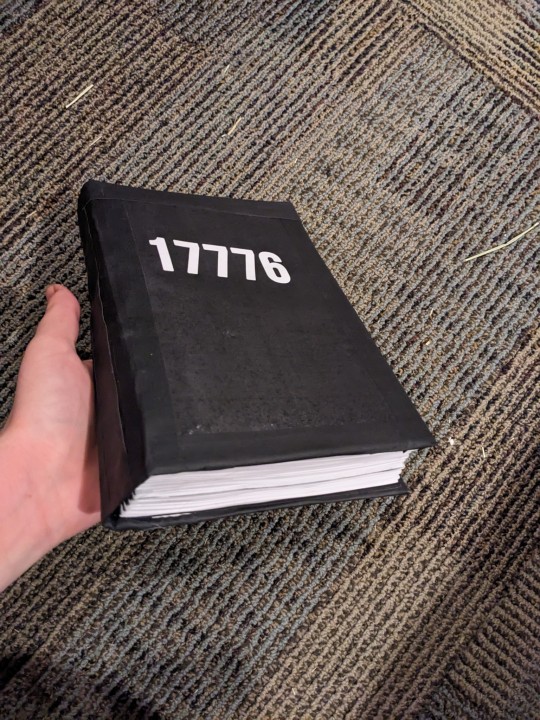

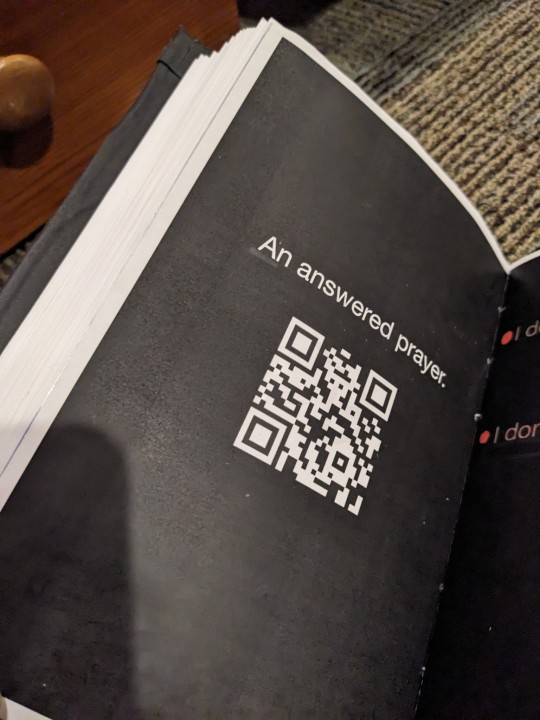

I'm like super normal and not unhinged in the slightest (I spent 3 days formatting, printing, and binding a niche internet story about sci fi football into a 280 page physical book)
#it's a little crusty around the edges but. i am not a professional i just like binding books#the colored dots are bc my printer is strictly black and white and i needed a way to differentiate text colors#so. posca pens.#all the videos are QR codes !!#17776#is there even a fandom for this i legitimately don't know#if there is i love y'all
18K notes
·
View notes
Text
Kenny Kirkland: The Pianistic Prodigy of Modern Jazz
Introduction:
In the realm of modern jazz, few pianists left as indelible a mark as Kenny Kirkland. A virtuoso with an uncanny ability to blend technical prowess with profound musicality, Kirkland’s contributions continue to resonate through the annals of jazz history. This article delves into this extraordinary musician’s life, music, and enduring legacy.
Early Days:
Kenny Kirkland was born…

View On WordPress
#Black Codes#Blue Turtles#Branford Marsalis#Bring on the Night#First Meeting#Hot House Flowers#Jazz History#Jazz Pianists#Kenny Kirkland#Michal Urbaniak#Miroslav Vitous#Miroslav Vitous Group#Police#Sting#The Dream of the Blue Turtles#Think of One#Wynton Marsalis
1 note
·
View note
Text
If you're thinking about watching that Pontoon Boat fight that went viral... watch this instead.
0 notes
Text
https://www.naacpldf.org/13th-amendment-emancipation/
#13th amendment#the 13th amendment#slavery#abolishing slavery#naacpldf#jim crow#black codes#the black codes#simeon spencer
0 notes
Text

1865: Following the war, white South Carolinians rewrite the state constitution in order to return to the union.
They restrict the right to vote and elect an all-white legislature that then passes the “Black Codes,” which restrict rights of the newly freed people. Congress responds by passing the Reconstruction Acts, which require that the state rewrite the Constitution. African-Americans participated under federal military supervision.
6 notes
·
View notes
Text
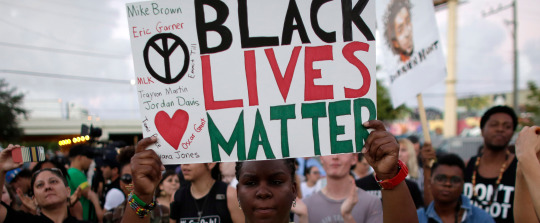
Outrage over racial profiling and the killing of African Americans by police officers and vigilantes in recent years helped give rise to the Black Lives Matter movement.
But tensions between the police and black communities are nothing new.
There are many precedents to the Ferguson, Missouri protests that ushered in the Black Lives Matter movement. Those protests erupted in 2014 after a police officer shot unarmed 18-year-old Michael Brown; the officer was subsequently not indicted.
The precedents include the Los Angeles riots that broke out after the 1992 acquittal of police officers for beating Rodney King. Those riots happened nearly three decades after the 1965 Watts riots, which began with Marquette Frye, an African American, being pulled over for suspected drunk driving and roughed up by the police for resisting arrest.
I’m a criminal justice researcher who often focuses on issues of race, class and crime. Through my research and from teaching a course on diversity in criminal justice, I have come to see how the roots of racism in American policing – first planted centuries ago – have not yet been fully purged.
Slave Patrols
There are two historical narratives about the origins of American law enforcement.
Policing in southern slave-holding states had roots in slave patrols, squadrons made up of white volunteers empowered to use vigilante tactics to enforce laws related to slavery. They located and returned enslaved people who had escaped, crushed uprisings led by enslaved people and punished enslaved workers found or believed to have violated plantation rules.
The first slave patrols arose in South Carolina in the early 1700s. As University of Georgia social work professor Michael A. Robinson has written, by the time John Adams became the second U.S. president, every state that had not yet abolished slavery had them.
Members of slave patrols could forcefully enter anyone’s home, regardless of their race or ethnicity, based on suspicions that they were sheltering people who had escaped bondage.
The more commonly known precursors to modern law enforcement were centralized municipal police departments that began to form in the early 19th century, beginning in Boston and soon cropping up in New York City, Albany, Chicago, Philadelphia and elsewhere.
The first police forces were overwhelmingly white, male and more focused on responding to disorder than crime.
As Eastern Kentucky University criminologist Gary Potter explains, officers were expected to control a “dangerous underclass” that included African Americans, immigrants and the poor. Through the early 20th century, there were few standards for hiring or training officers.
Police corruption and violence – particularly against vulnerable people – were commonplace during the early 1900s. Additionally, the few African Americans who joined police forces were often assigned to black neighborhoods and faced discrimination on the job. In my opinion, these factors – controlling disorder, lack of adequate police training, lack of nonwhite officers and slave patrol origins – are among the forerunners of modern-day police brutality against African Americans.
Jim Crow Laws
Slave patrols formally dissolved after the Civil War ended. But formerly enslaved people saw little relief from racist government policies as they promptly became subject to Black Codes.
For the next three years, these new laws specified how, when and where African Americans could work and how much they would be paid. They also restricted black voting rights, dictated how and where African Americans could travel and limited where they could live.
The ratification of the 14th Amendment in 1868 quickly made the Black Codes illegal by giving formerly enslaved blacks equal protection of laws through the Constitution. But within two decades, Jim Crow laws aimed at subjugating African Americans and denying their civil rights were enacted across southern and some northern states, replacing the Black Codes.
For about 80 years, Jim Crow laws mandated separate public spaces for blacks and whites, such as schools, libraries, water fountains and restaurants – and enforcing them was part of the police’s job. Blacks who broke laws or violated social norms often endured police brutality.
Meanwhile, the authorities didn’t punish the perpetrators when African Americans were lynched. Nor did the judicial system hold the police accountable for failing to intervene when black people were being murdered by mobs.
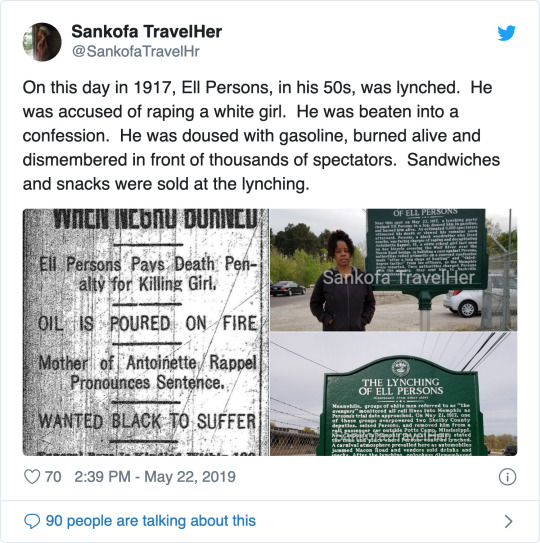
Reverberating Today
For the past five decades, the federal government has forbidden the use of racist regulations at the state and local level. Yet people of color are still more likely to be killed by the police than whites.
The Washington Post tracks the number of Americans killed by the police by race, gender and other characteristics. The newspaper’s database indicates that 229 out of 992 of those who died that way in 2018, 23% of the total, were black, even though only about 12% of the country is African American.
Policing’s institutional racism of decades and centuries ago still matters because policing culture has not changed as much as it could. For many African Americans, law enforcement represents a legacy of reinforced inequality in the justice system and resistance to advancement – even under pressure from the civil rights movement and its legacy.
In addition, the police disproportionately target black drivers.
When a Stanford University research team analyzed data collected between 2011 and 2017 from nearly 100 million traffic stops to look for evidence of systemic racial profiling, they found that black drivers were more likely to be pulled over and to have their cars searched than white drivers. They also found that the percentage of black drivers being stopped by police dropped after dark when a driver’s complexion is harder to see from outside the vehicle.
This persistent disparity in policing is disappointing because of progress in other regards.
There is greater understanding within the police that brutality, particularly lethal force, leads to public mistrust, and police forces are becoming more diverse.
What’s more, college students majoring in criminal justice who plan to become future law enforcement officers now frequently take “diversity in criminal justice” courses. This relatively new curriculum is designed to, among other things, make future police professionals more aware of their own biases and those of others. In my view, what these students learn in these classes will make them more attuned to the communities they serve once they enter the workforce.
In addition, law enforcement officers and leaders are being trained to recognize and minimize their own biases in New York City and other places where people of color are disproportionately stopped by the authorities and arrested.
But the persistence of racially biased policing means that unless American policing reckons with its racist roots, it is likely to keep repeating mistakes of the past. This will hinder police from fully protecting and serving the entire public.
#The Racist Roots of American Policing: From Slave Patrols to Traffic Stops#american policing#slave catchers#police#fuck the police#acab#racism with a badge and gun#white supremacy#systemic racism#racial profiling#racist roots#Black Codes
10 notes
·
View notes
Text


My piece for the Lies Of P art contest -
I poured all my soul and few night hours into this one...! Lies Of P universe and its characters are heartbreakingly haunting, so I tried to draw something haunting.
I created a Twitter/X account especially for the contest. I guess you can now find me here now too ! Here's the post link.
#lies of p#art contest#fanart#lop#pinocchio#my art#proud to announce that P is black parade coded (i listened religiously to that album while drawing our puppet boy)
3K notes
·
View notes
Text
The Black Codes are one of those dirty little secrets of American history:
It can also be forgotten that as wretched as it was in every possible way that Jim Crow is the second choice of the South and reflected the GAINS of Reconstruction. The initial vision was passed in 1865-6, the Black Codes. In a prophetic commentary, if an unintended one, on the future of queer liberation in the United States the one right that the Black Codes did secure for Black people (and both not a small one and yet a sign of how ultimately worthless as a right it is in itself) was legally guaranteed marriages. Otherwise it amounted to a willful attempt to reconstruct the old order in a new form, creating a servile class of agrarian Black laborers and an idle class of parasites who squatted and grew fat from that labor.
Combined with the two incidents I will be getting to after, it serves as the beginning of Radical Reconstruction. The reality of the North belatedly realizing that defeat in the war did not humble the South, that the heirs of the Confederacy simply saw defeat in one way and intended to minimize it, was combined with the unfortunate effects of Lincoln's assassination and the Presidency of Andrew Johnson to mark the onset of a brand new crisis.
#lightdancer comments on history#black history month#black resistance#black codes#reconstruction era#bourbon south
1 note
·
View note
Text


a downgrade really
#cotl#cult of the lamb#cotl narinder#narinder#cotl lamb#my art#its something abt black cat coded characters that take themselves too seriously that makes me want to make fun of them#i want to play through this game myself instead of watching play throughs but i dont have a controller#and im not joking im too bad of a gamer to play on keyboard ill never finish the fights#i wont get past leshy i know this
2K notes
·
View notes